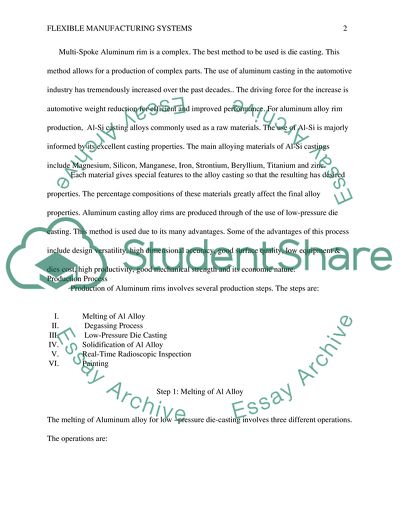Cite this document
(Aluminum Rims Production in a Flexible Manufacturing System Coursework Example | Topics and Well Written Essays - 1500 words, n.d.)
Aluminum Rims Production in a Flexible Manufacturing System Coursework Example | Topics and Well Written Essays - 1500 words. https://studentshare.org/engineering-and-construction/1862451-flexible-manufacturing-system-design-modelling-and-evaluation-rims
Aluminum Rims Production in a Flexible Manufacturing System Coursework Example | Topics and Well Written Essays - 1500 words. https://studentshare.org/engineering-and-construction/1862451-flexible-manufacturing-system-design-modelling-and-evaluation-rims
(Aluminum Rims Production in a Flexible Manufacturing System Coursework Example | Topics and Well Written Essays - 1500 Words)
Aluminum Rims Production in a Flexible Manufacturing System Coursework Example | Topics and Well Written Essays - 1500 Words. https://studentshare.org/engineering-and-construction/1862451-flexible-manufacturing-system-design-modelling-and-evaluation-rims.
Aluminum Rims Production in a Flexible Manufacturing System Coursework Example | Topics and Well Written Essays - 1500 Words. https://studentshare.org/engineering-and-construction/1862451-flexible-manufacturing-system-design-modelling-and-evaluation-rims.
“Aluminum Rims Production in a Flexible Manufacturing System Coursework Example | Topics and Well Written Essays - 1500 Words”. https://studentshare.org/engineering-and-construction/1862451-flexible-manufacturing-system-design-modelling-and-evaluation-rims.


